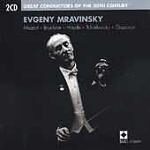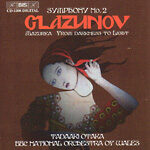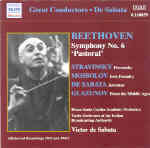

Alexander Glazunov’s Fifth Symphony is an exemplar of the late-19th-century Russian style, with its long, brooding first-movement introduction, upbeat Allegro (based on a theme strongly

Aram Khachaturian recorded selections from his two famous ballets several times for various labels, but this Decca selection of excerpts has long enjoyed particular affection,

Evgeny Mravinsky was an obvious choice for inclusion in EMI’s Great Conductors of the 20th Century series, but it’s not until we get to the

The third installment in Tadaaki Otaka’s ongoing Glazunov symphony series falls short of the level achieved in the previous issues, primarily due to sound quality.

Tadaaki Otaka follows up his fine Glazunov Second with this excellent performance of Symphony No. 3. Many of the earlier recording’s virtues are present here:

Alexander Glazunov’s Symphony No. 2 (completed in 1886, when the composer was 21) is distinguished by its quintessentially Russian thematic style, which like Borodin’s juxtaposes

Glazunov composed relatively little music for solo piano despite being acclaimed as a superb performer on the instrument. This excellent disc contains his complete output

The Decca/Ashkenazy and EMI/Previn recordings of Prokofiev’s complete Cinderella both appeared simultaneously in the early days of digital. Previn’s LSO performance was considered warmer and

Victor de Sabata’s reputation is primarily that of a conductor who brought passion and exactitude to the theater. This is evident via his post-war live

Glazunov’s Third symphony is far less stylistically assured than its immediate predecessor, a fact acknowledged even by his most ardent supporters, including Rimsky-Korsakov. When it’s
![]()
